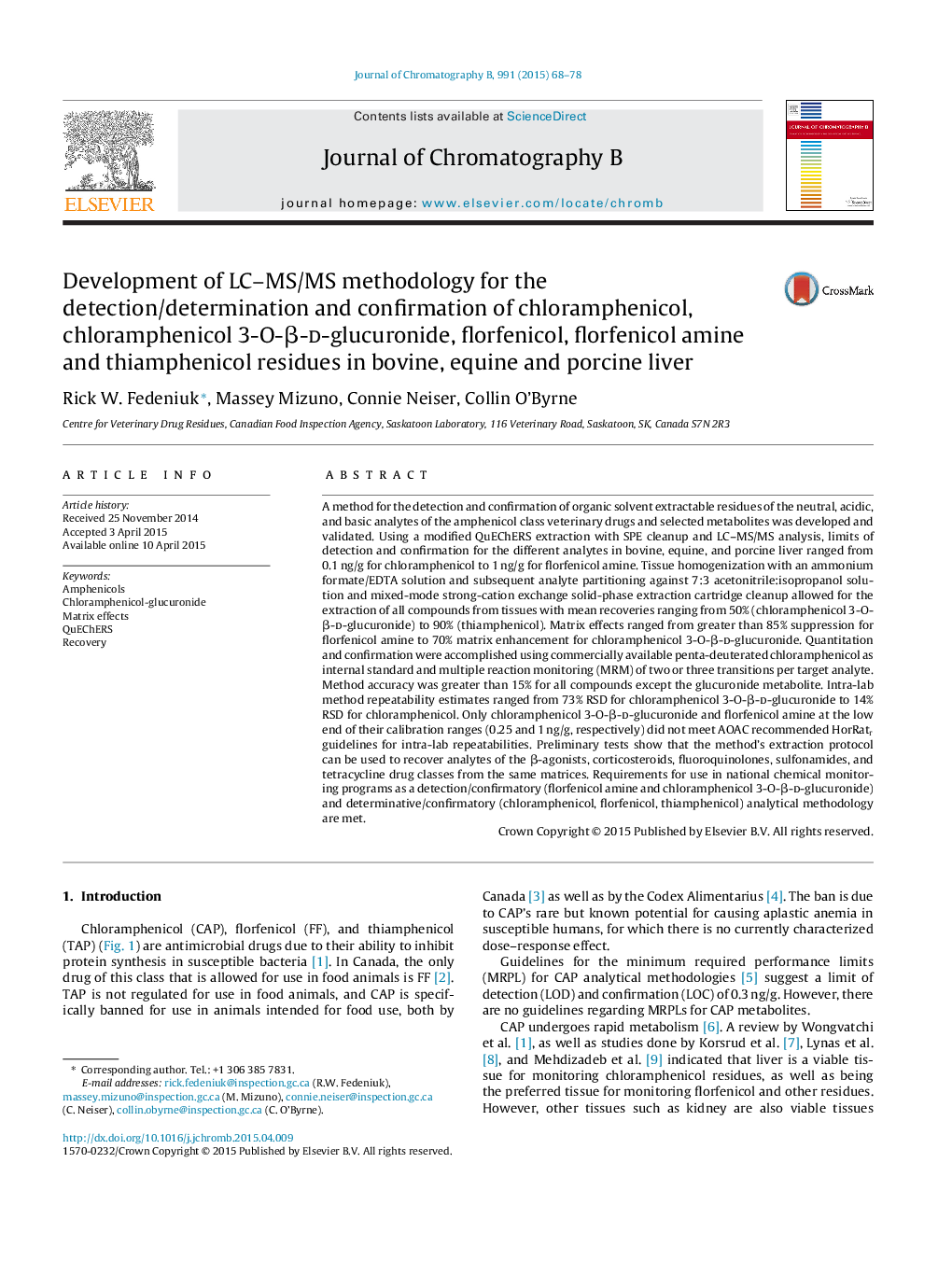| Article ID | Journal | Published Year | Pages | File Type |
|---|---|---|---|---|
| 1212165 | Journal of Chromatography B | 2015 | 11 Pages |
•Simultaneous analysis of chloramphenicol and its major glucuronide metabolite without enzymatic digestion.•Modified QuEChERS approach to analyze polar, ionized compounds.•The extraction protocol in the validated method successfully recovered non-validated compounds from the same matrices.
A method for the detection and confirmation of organic solvent extractable residues of the neutral, acidic, and basic analytes of the amphenicol class veterinary drugs and selected metabolites was developed and validated. Using a modified QuEChERS extraction with SPE cleanup and LC–MS/MS analysis, limits of detection and confirmation for the different analytes in bovine, equine, and porcine liver ranged from 0.1 ng/g for chloramphenicol to 1 ng/g for florfenicol amine. Tissue homogenization with an ammonium formate/EDTA solution and subsequent analyte partitioning against 7:3 acetonitrile:isopropanol solution and mixed-mode strong-cation exchange solid-phase extraction cartridge cleanup allowed for the extraction of all compounds from tissues with mean recoveries ranging from 50% (chloramphenicol 3-O-β-d-glucuronide) to 90% (thiamphenicol). Matrix effects ranged from greater than 85% suppression for florfenicol amine to 70% matrix enhancement for chloramphenicol 3-O-β-d-glucuronide. Quantitation and confirmation were accomplished using commercially available penta-deuterated chloramphenicol as internal standard and multiple reaction monitoring (MRM) of two or three transitions per target analyte. Method accuracy was greater than 15% for all compounds except the glucuronide metabolite. Intra-lab method repeatability estimates ranged from 73% RSD for chloramphenicol 3-O-β-d-glucuronide to 14% RSD for chloramphenicol. Only chloramphenicol 3-O-β-d-glucuronide and florfenicol amine at the low end of their calibration ranges (0.25 and 1 ng/g, respectively) did not meet AOAC recommended HorRatr guidelines for intra-lab repeatabilities. Preliminary tests show that the method's extraction protocol can be used to recover analytes of the β-agonists, corticosteroids, fluoroquinolones, sulfonamides, and tetracycline drug classes from the same matrices. Requirements for use in national chemical monitoring programs as a detection/confirmatory (florfenicol amine and chloramphenicol 3-O-β-d-glucuronide) and determinative/confirmatory (chloramphenicol, florfenicol, thiamphenicol) analytical methodology are met.
